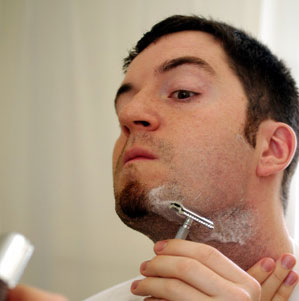Shaving with a safety razor is the 2nd most efficient way to get a perfect close shave. The only thing better is a wet shave with a straight razor. However, not everyone has the desire or willingness to overcome the learning curve of how to maintain and use a straight razor. That being said, safety razors are a nostalgic and effective way to get a close shave.
For those of you that want to get the most out of your safety razor routine, we have put together this infographic on everything you need to know about safety razors and and how to use them effectively.
Embed this infographic on your site:
[divider]
Below you can find a more detailed, written version of the infographic:
Types of Safety Razors
Open Comb
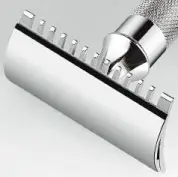
Guys with thicker hair can benefit from an open comb razor because it effectively partitions hair for a clean cut. Instead of experiencing pulls and nicks, an open comb razor will provide a smooth shave.
It is a tough razor designed for tough hair. If you have sensitive skin, you may find that an open comb razor is too harsh for your skin
Straight Edge
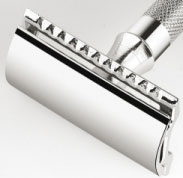
The bar also helps to keep the skin taut. It takes the guesswork out of shaving by creating a flat and smooth surface.You can easily glide a straight edge razor through the contours of your face, as the razor makes your skin taut all on its own.
Because of its ease of use, it is the most popular type of safety razor available.
Slant Bar
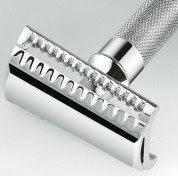
This type of razor is not meant for beginners, but rather seasoned shavers. That being said, shavers can use this razor like normal safety razors. There’s no special way to use it. All of the work is done by the slanted guard.
[divider]
Assembling A Safety Razor
Loading A One-Piece Razor
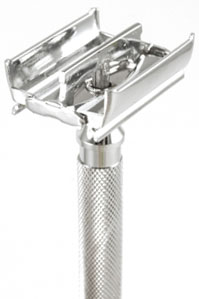
To load a blade into these razors, you must first remove the old blade by holding the entire razor upside-down. Simply twisting the handle or knob will cause the wings of the head to open up, dropping the old blade.
After the used blade is removed, you can turn the razor over. Inserting the new blade is as simple as positioning it with the guides in the head. With a twist of the knob, the head will close, making the razor fully assembled and ready.
[divider]
Loading A Two-Piece Razor
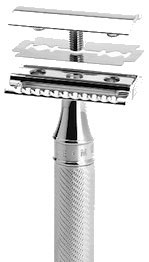
The top part of the head can then be removed to discard the old razor. The new blade must then be centered through the bolt and additional guides.
Once it is in place, you can then thread the bolt and top head piece onto the base. It should then be tightened by turning the knob or handle.
[divider]
Loading A Three-Piece Razor
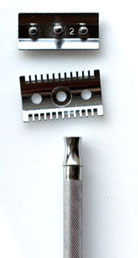
While still holding the base with the finger, you should lift the base at an angle. This allows the used blade to slide out. After centering the new blade on the guides and bolt, you should align the top head piece with the base.
You should then hold the assembled head with the curve side down and thread the bolt through the handle. Simple tighten the knob or handle for a secure fit.
[divider]
Resource: http://thecopperhat.ca/
How To Shave With A Safety Razor
So you have your fully assembled razor of choice. Now it is time to start shaving! In addition to your razor, you’ll need to get all of the essentials. This includes shaving cream or soap, some facial scrub, and a towel. With all of your gear ready, you can follow these steps to get a great shave.
1. Study Your Facial Hair
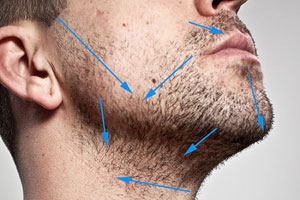
You’ll need to know which direction your hair grows all over your face and the points in which the directions change. This will ensure that you get an irritation-free shave.
[divider]
2. Clean And Exfoliate

A scrub contains particles that will remove dead skin and lift your hair. The hair will stand up, allowing you to get an even closer shave.
[divider]
3. Softening Your Hair
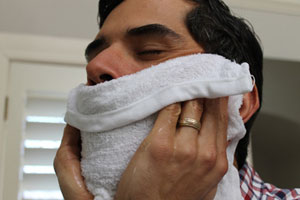
It is recommended to take a shower before you shave so that the steam and hot water softens the beard as much as possible.
If you don’t have time for a shower, you can use a towel soaked in hot water. A hot towel applied to the face for 30 seconds will soften your facial hair considerably.
[divider]
4. Applying The Shaving Cream or Soap
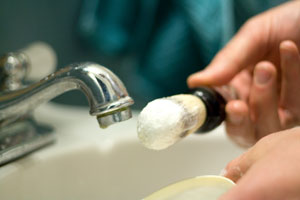
If you don’t have a brush, you can always use your hands. After application, you should leave the solution on your face for at least 30 seconds before you begin shaving.
[divider]
5. Shaving Your Sideburns And Sides Of Face
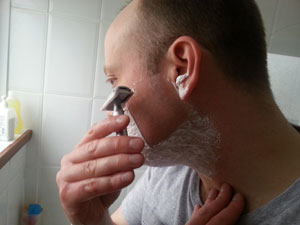
Holding the razor at a 30 degree angle, you should shave in short strokes. To avoid cuts and irritation, don’t add any pressure. The razor should have enough weight to easily glide across your face.
[divider]
6. Shaving The Neck
Special care and consideration should be taken when shaven the neck. Not only is this area sensitive, but hair tends to grow in sporadic directions.
With hair growth direction in mind, carefully shave the neck with short strokes to get a smooth shave.
[divider]
7. Shaving The Lip And Chin
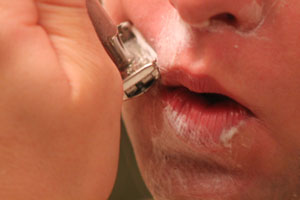
When shaving, you should use your free hand to stretch out the skin and make it as taut as possible. This will create a flat surface for the razor to glide over.
[divider]
8. Cleaning Up
After you are done shaving, you should clean your face up with a splash of cold water. This will close up the pores and relieve your skin.
Alternatively, you can use a damp towel with shaving tonic.
[divider]
9. Applying After Shave Balm
To soothe your skin, you should always apply an after shave balm. These balms have therapeutic oils and nutrients to reinvigorate your skin, leaving it hydrated and soft.
[divider]


